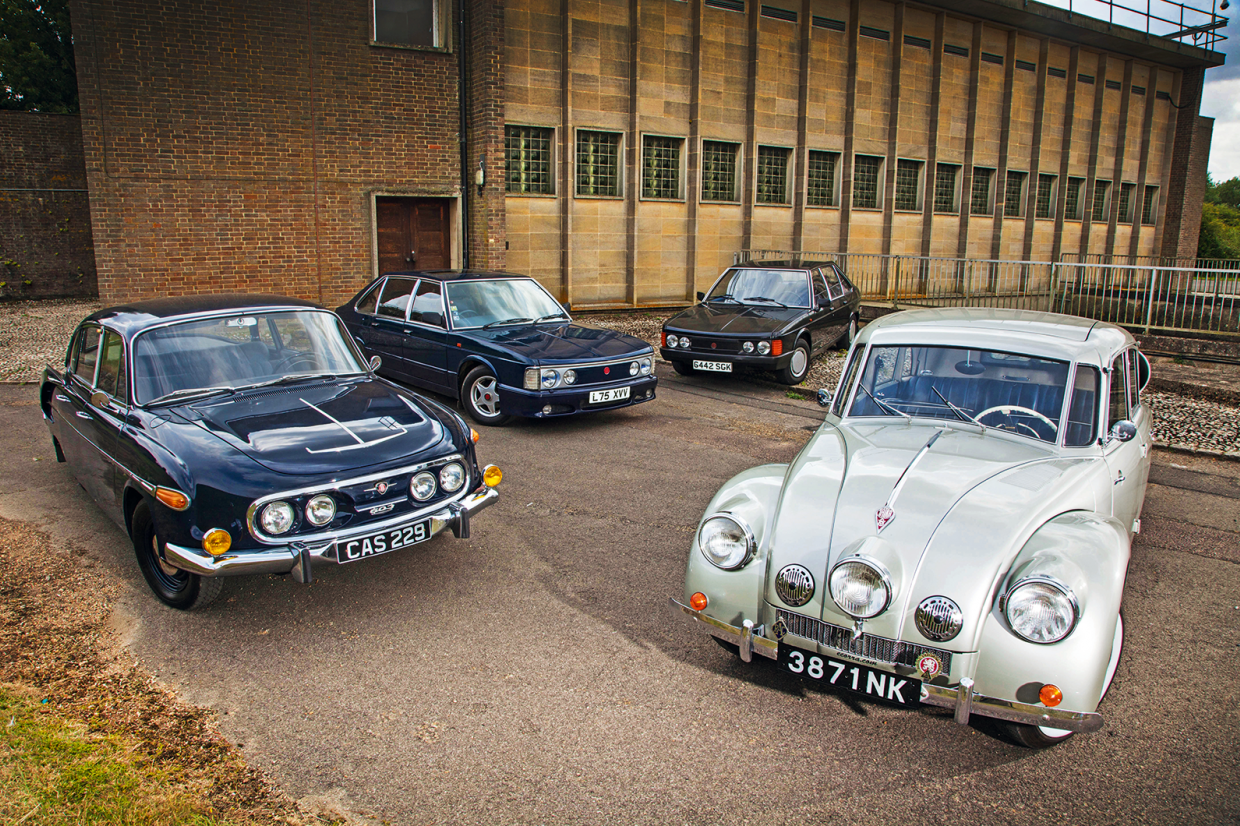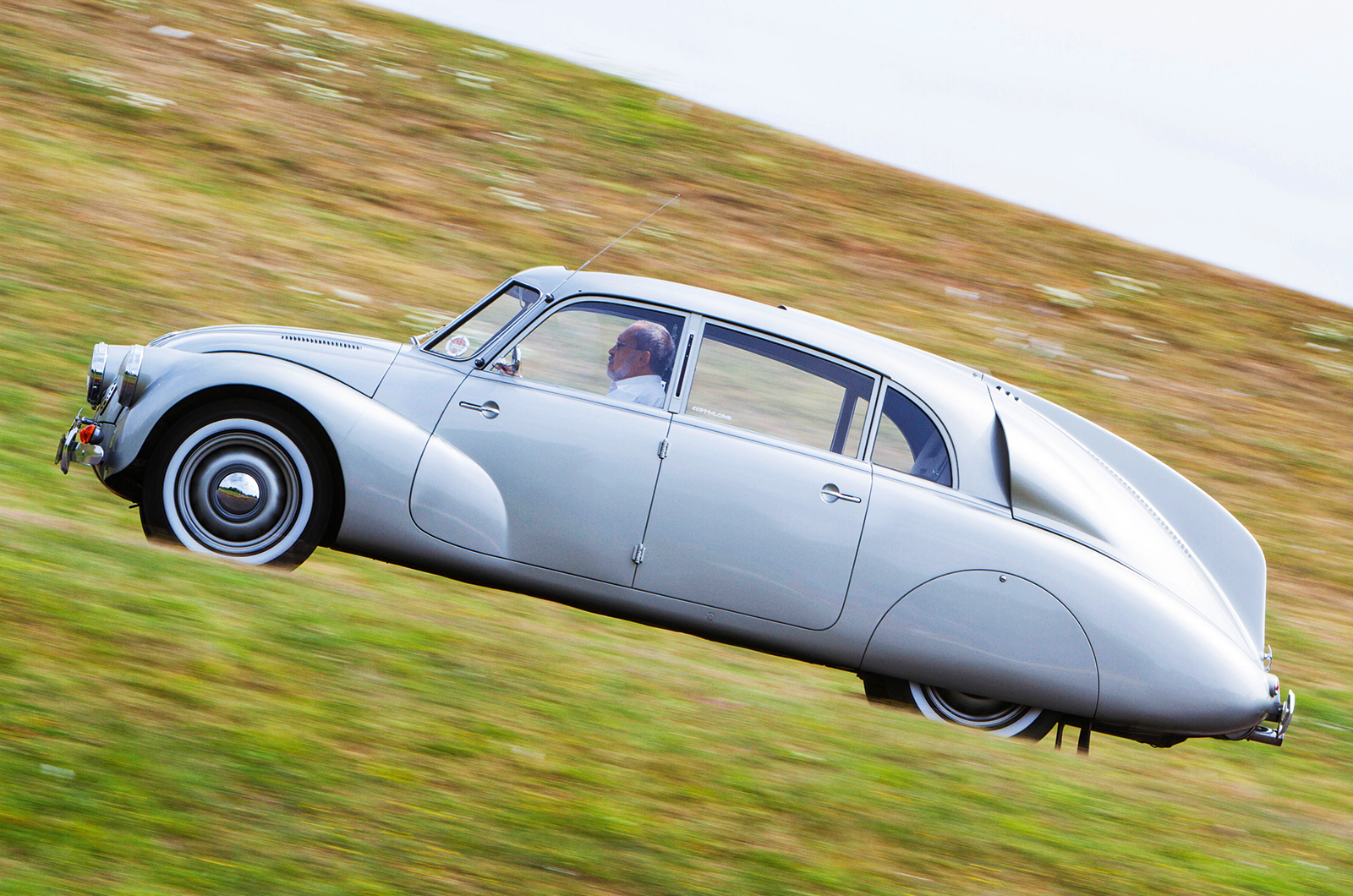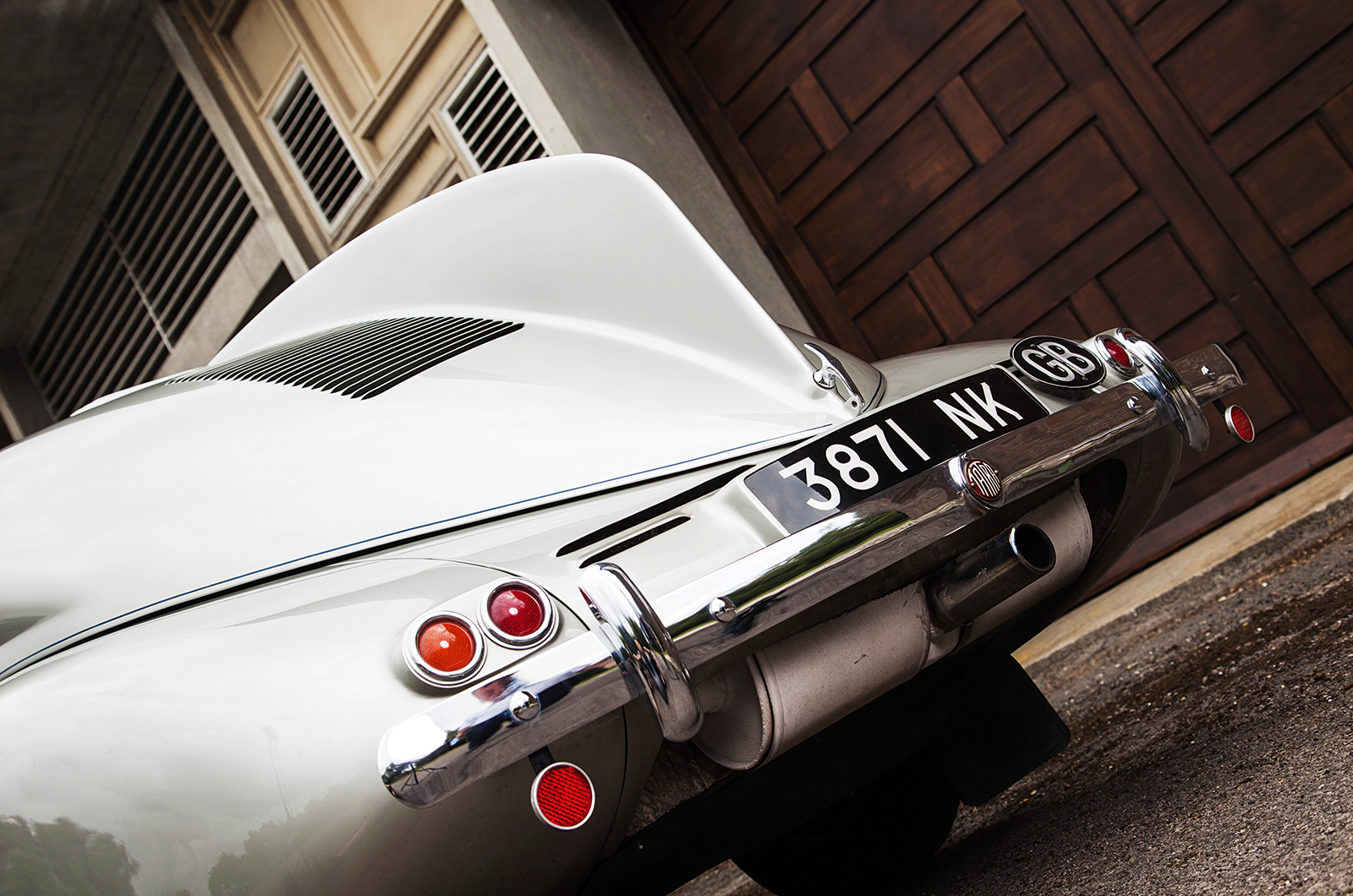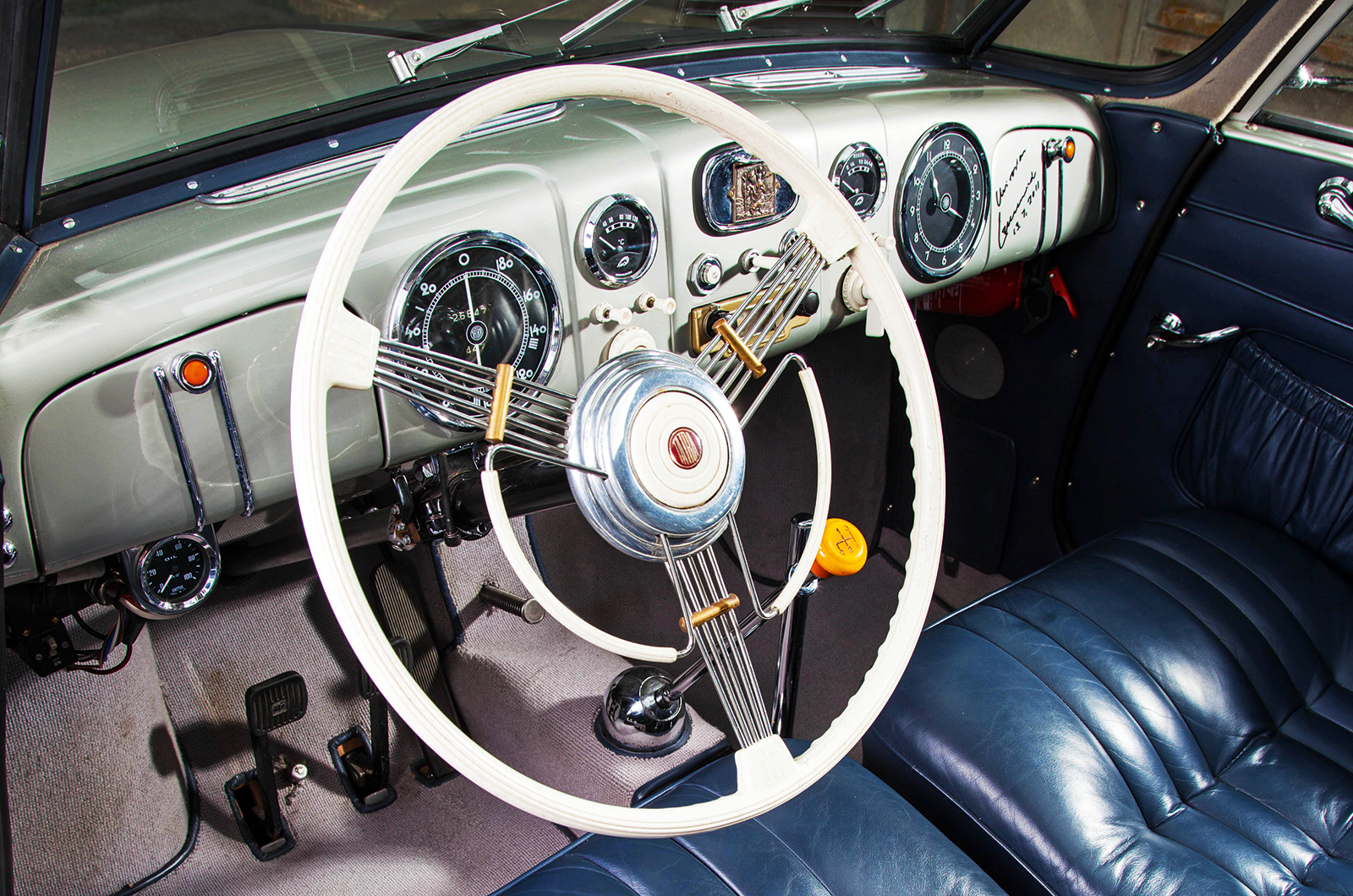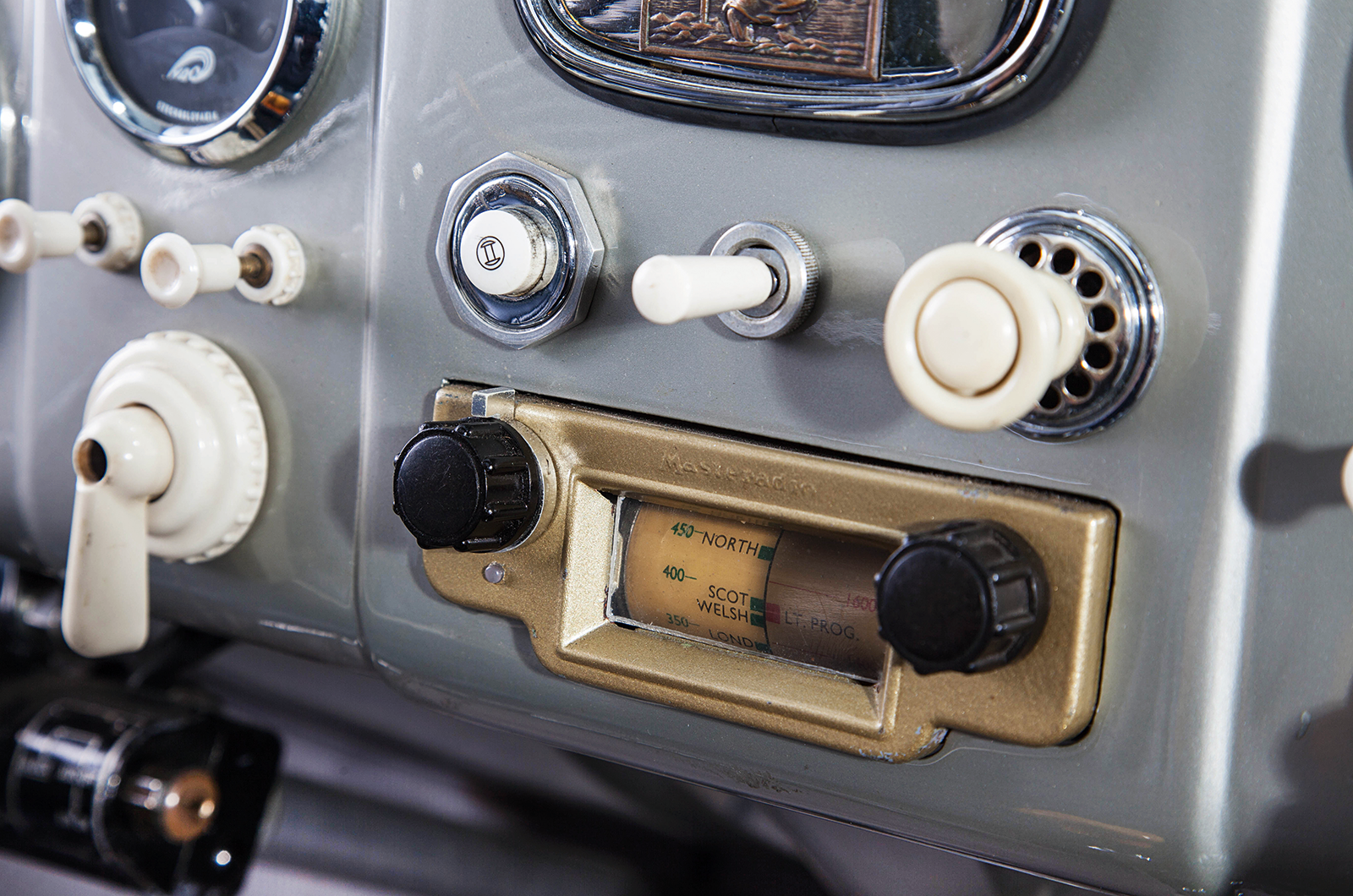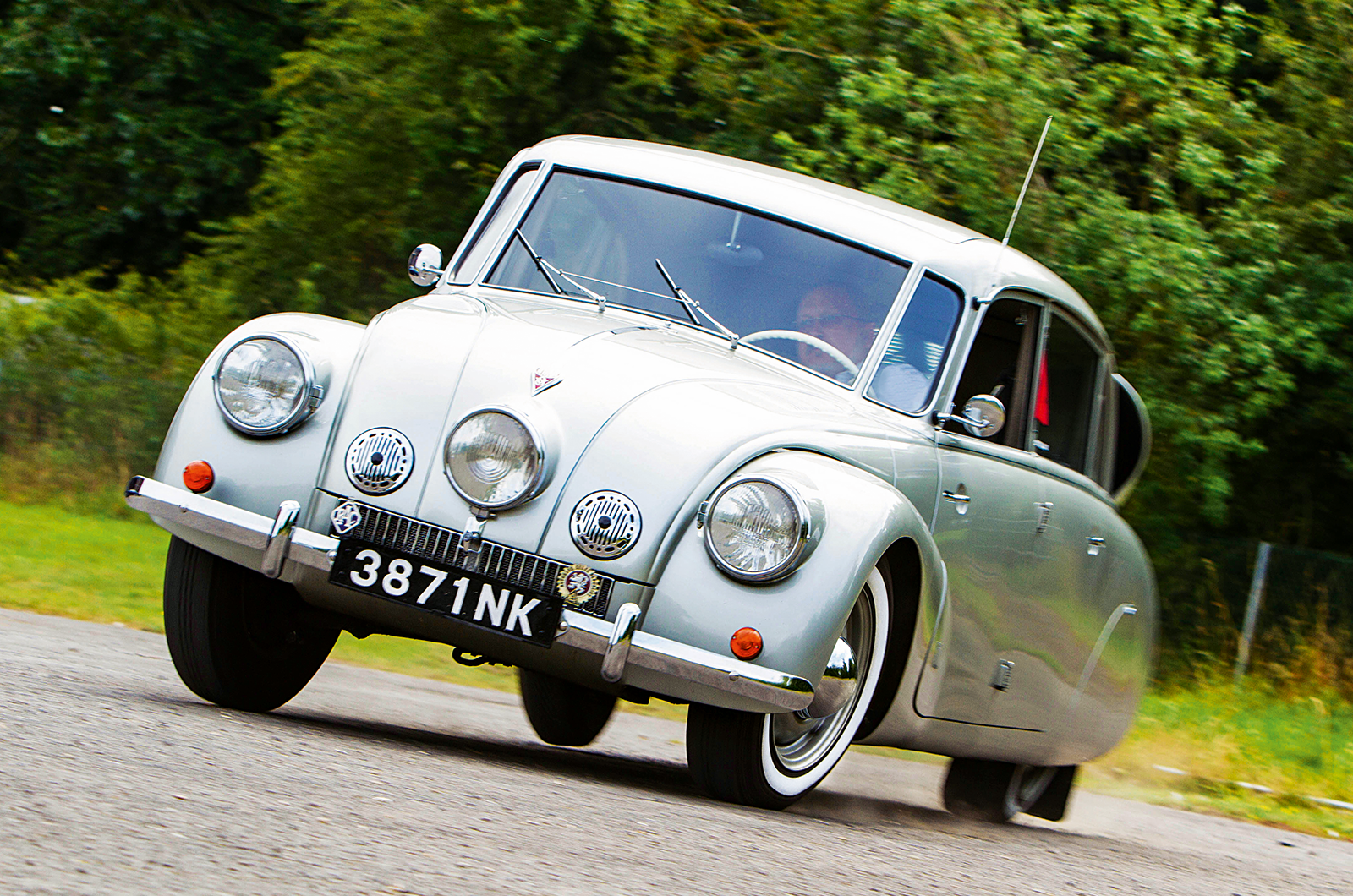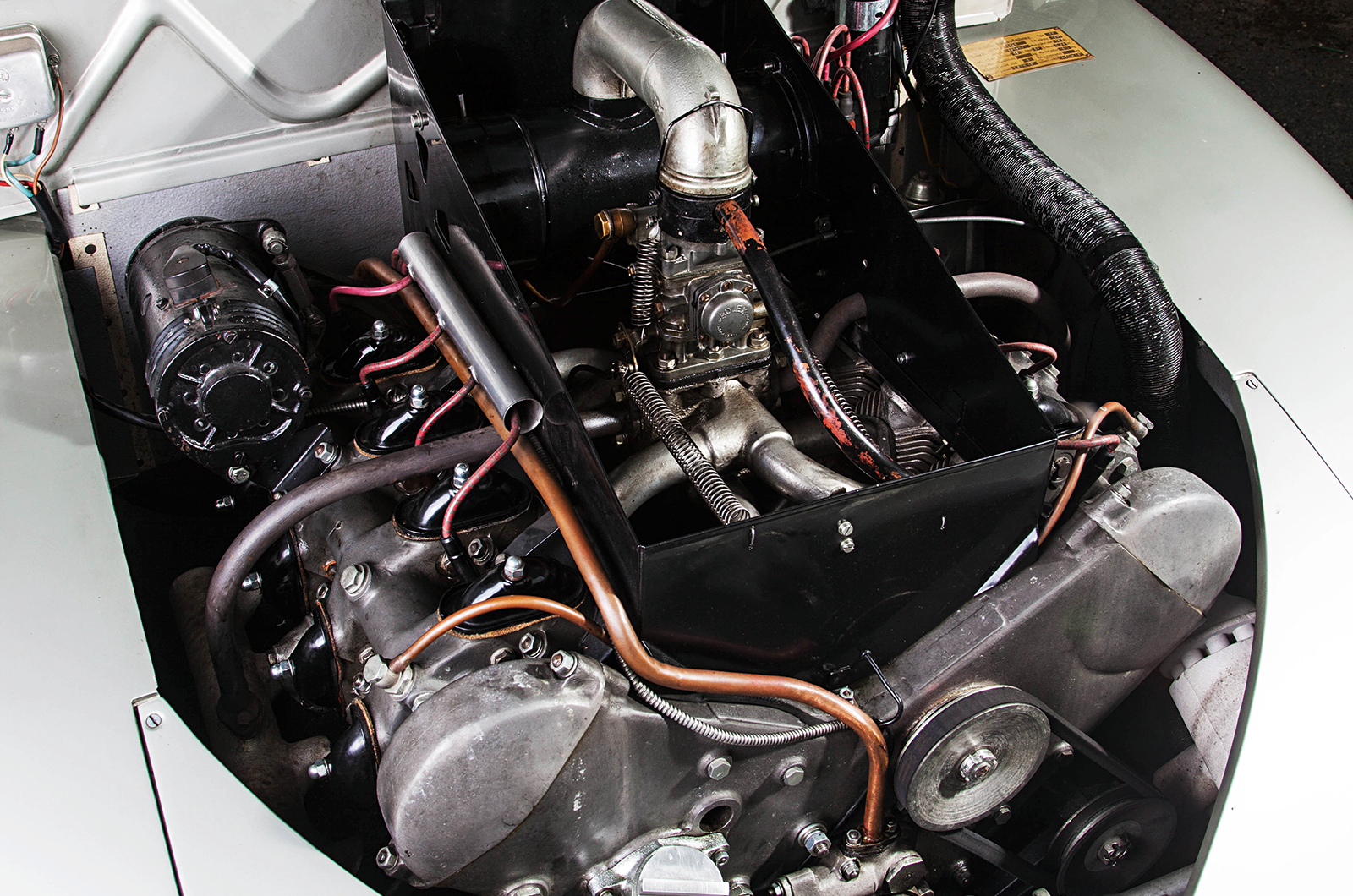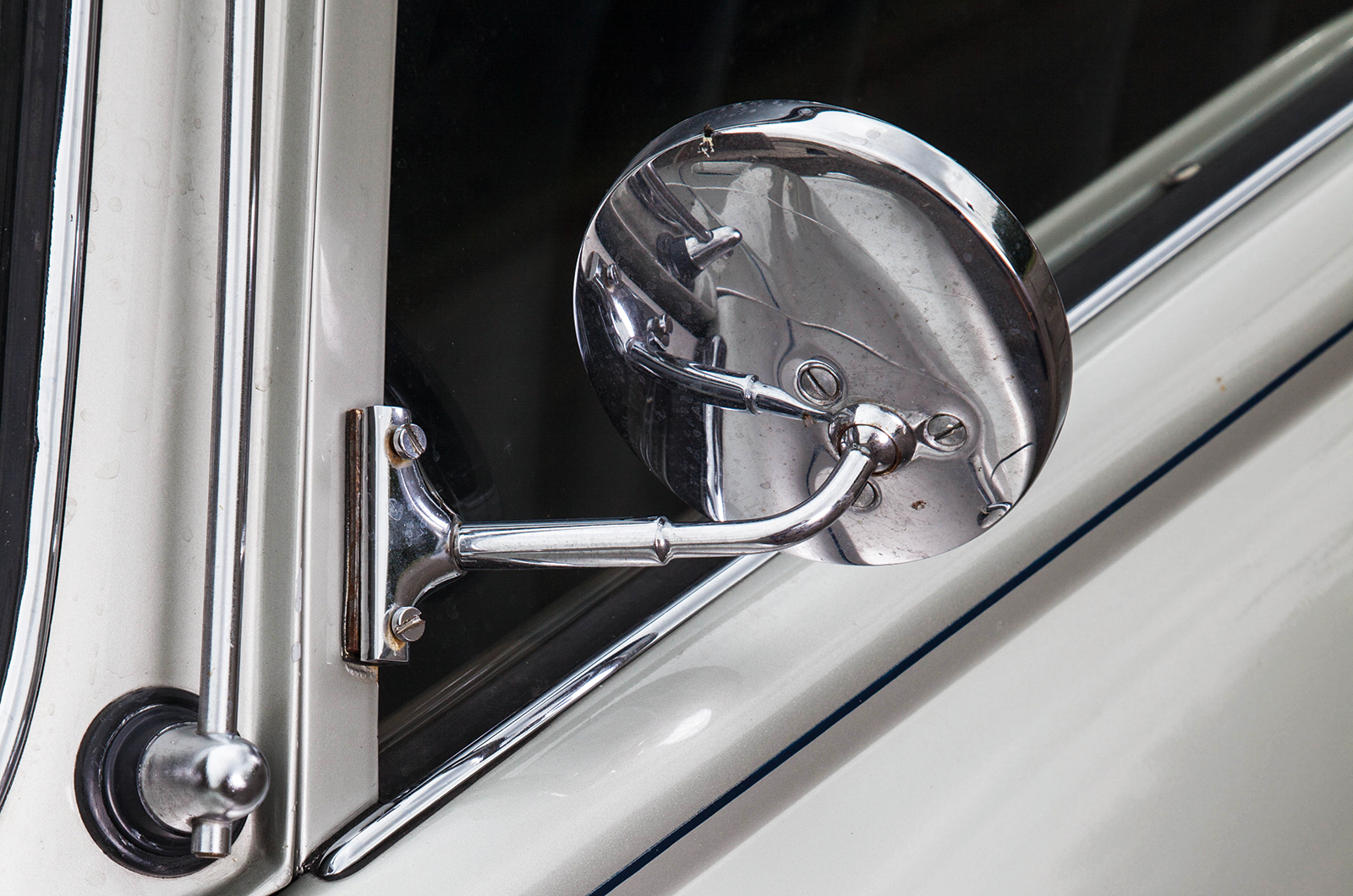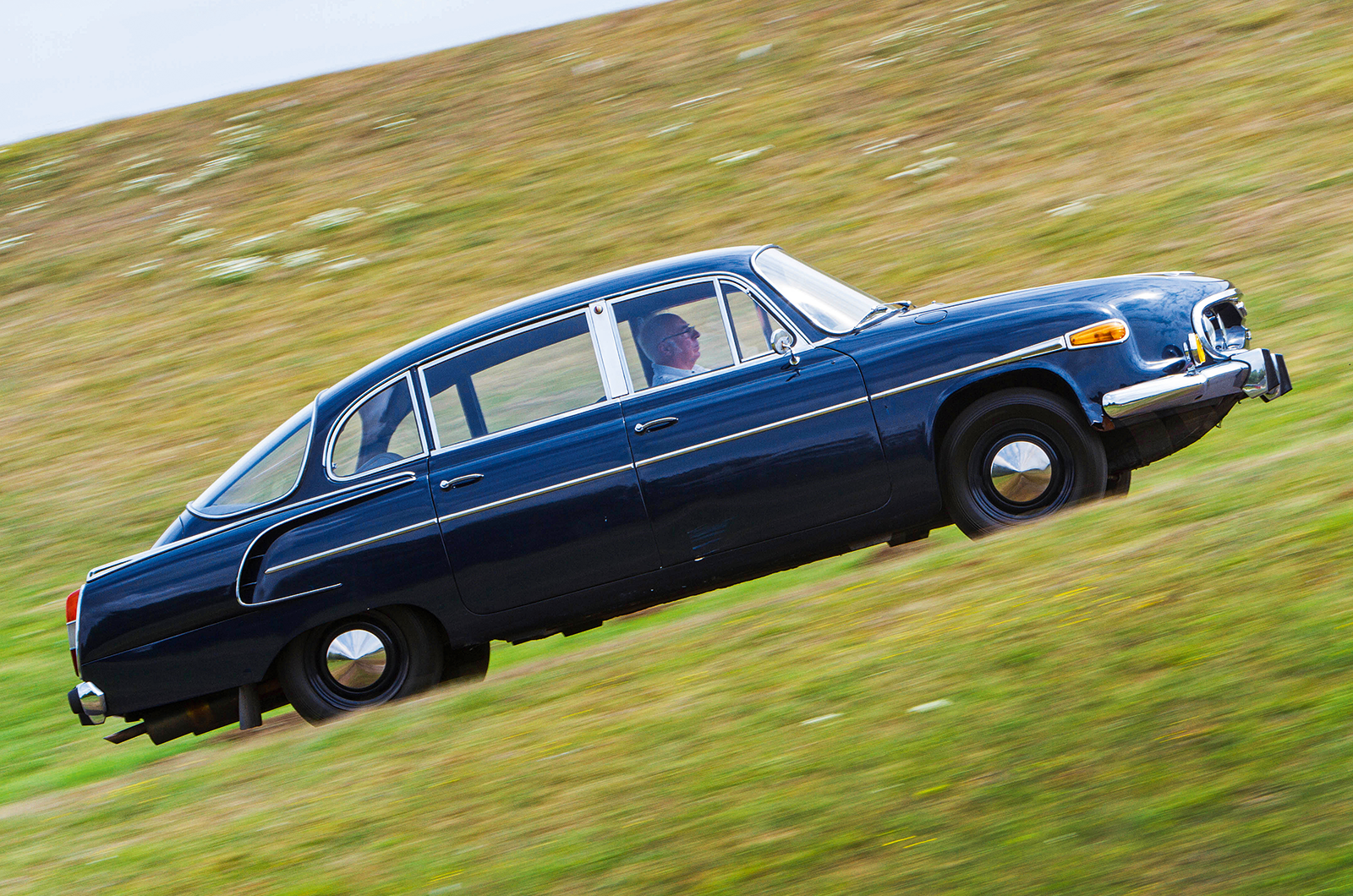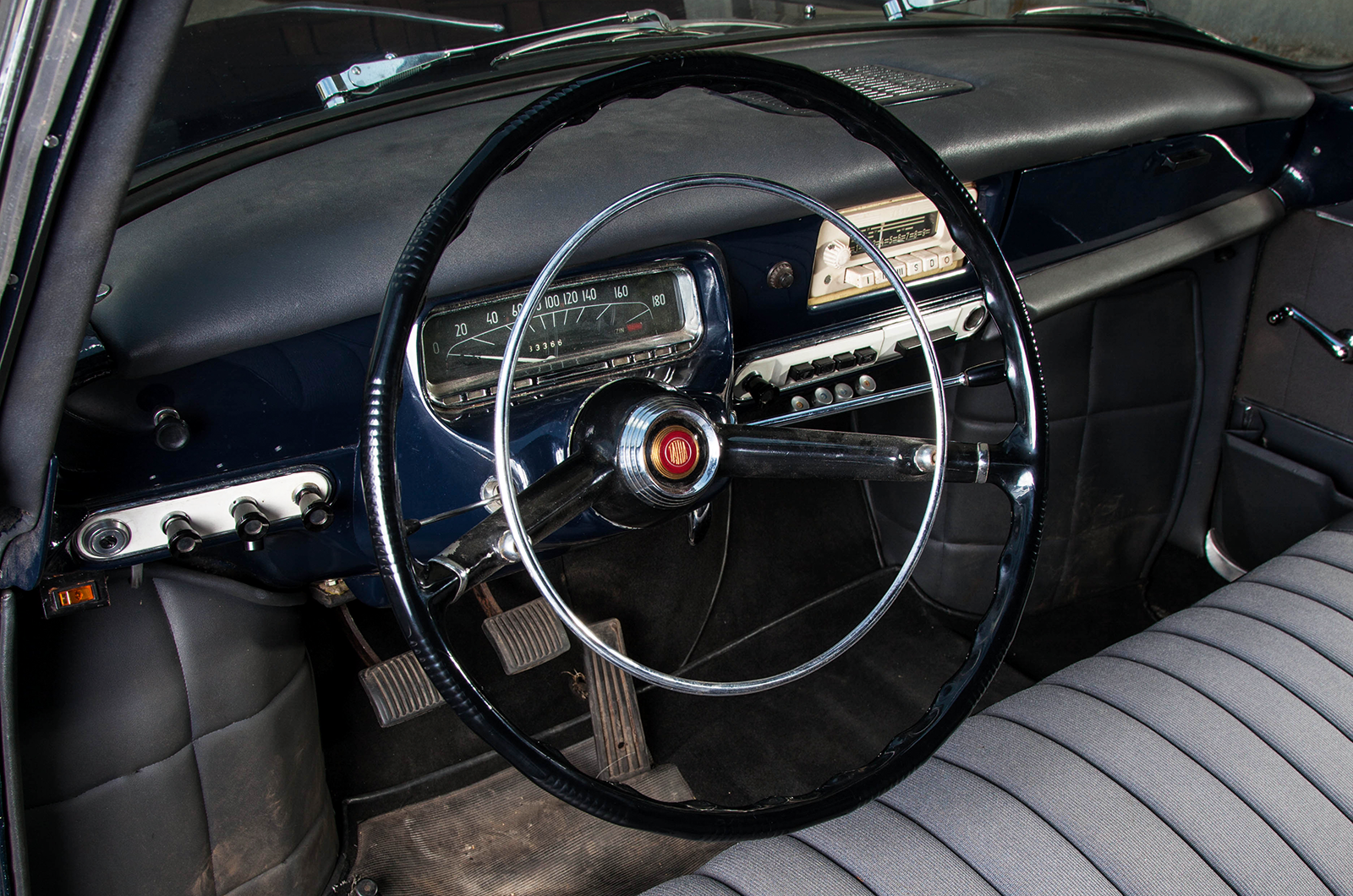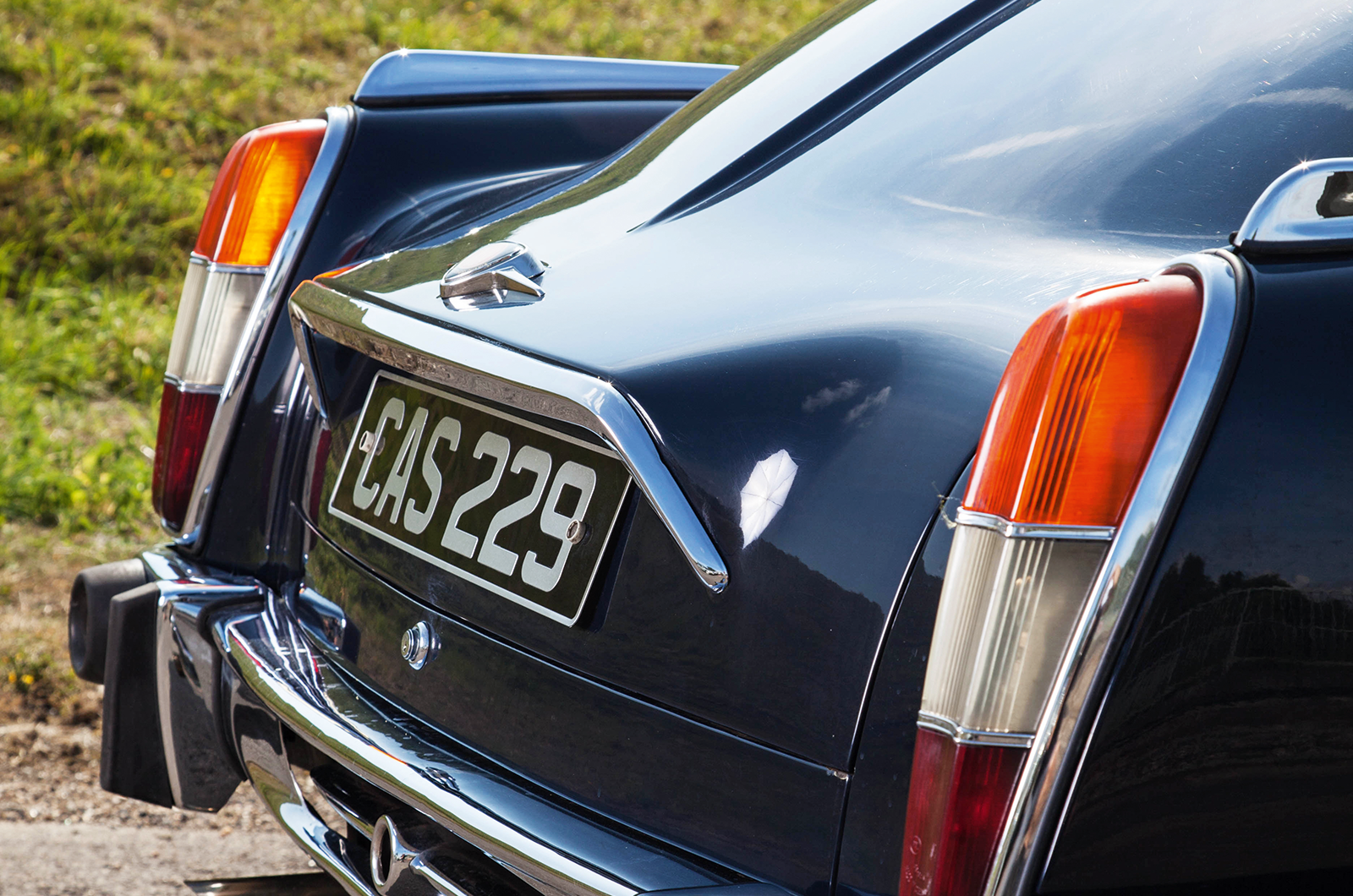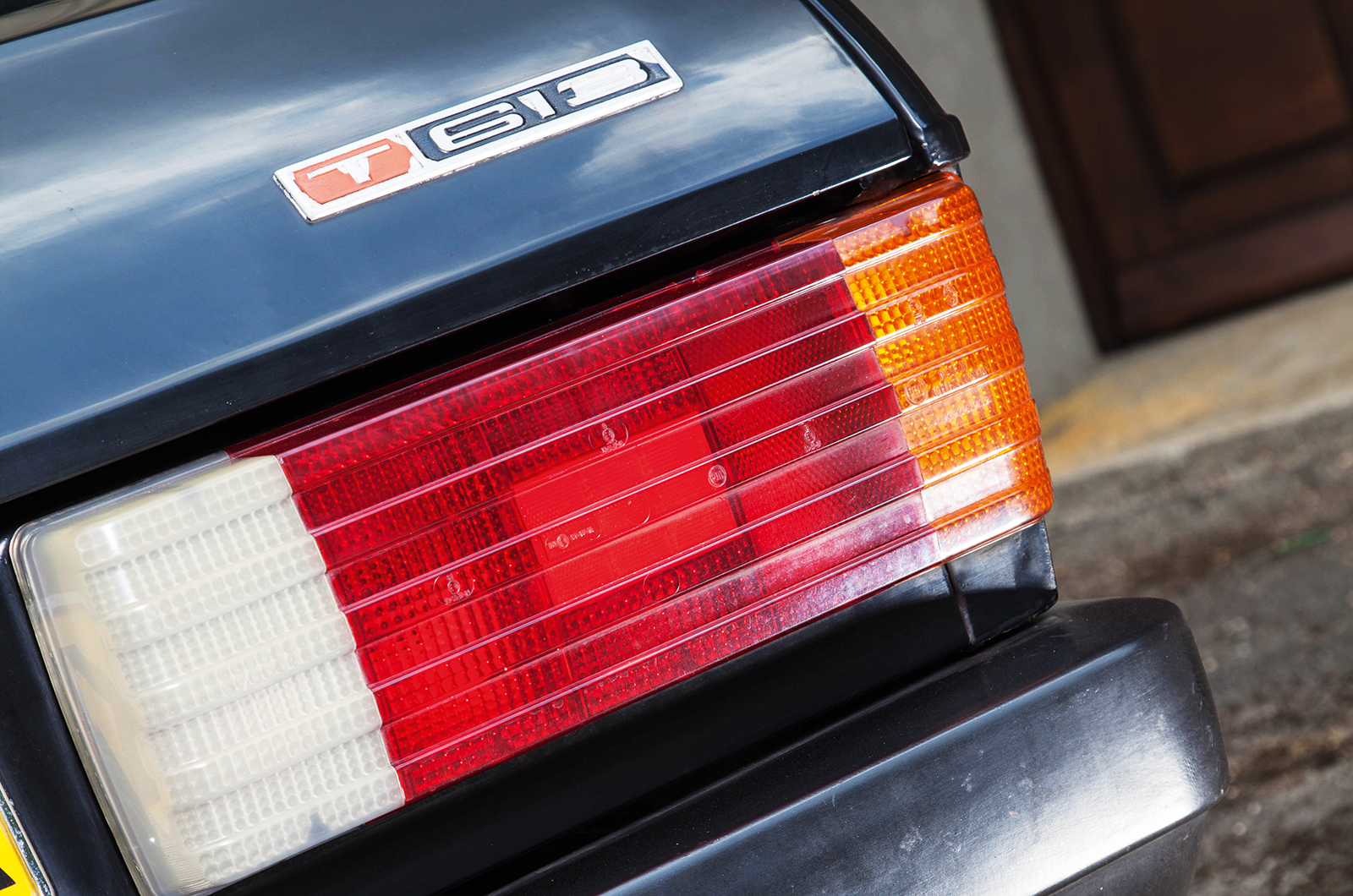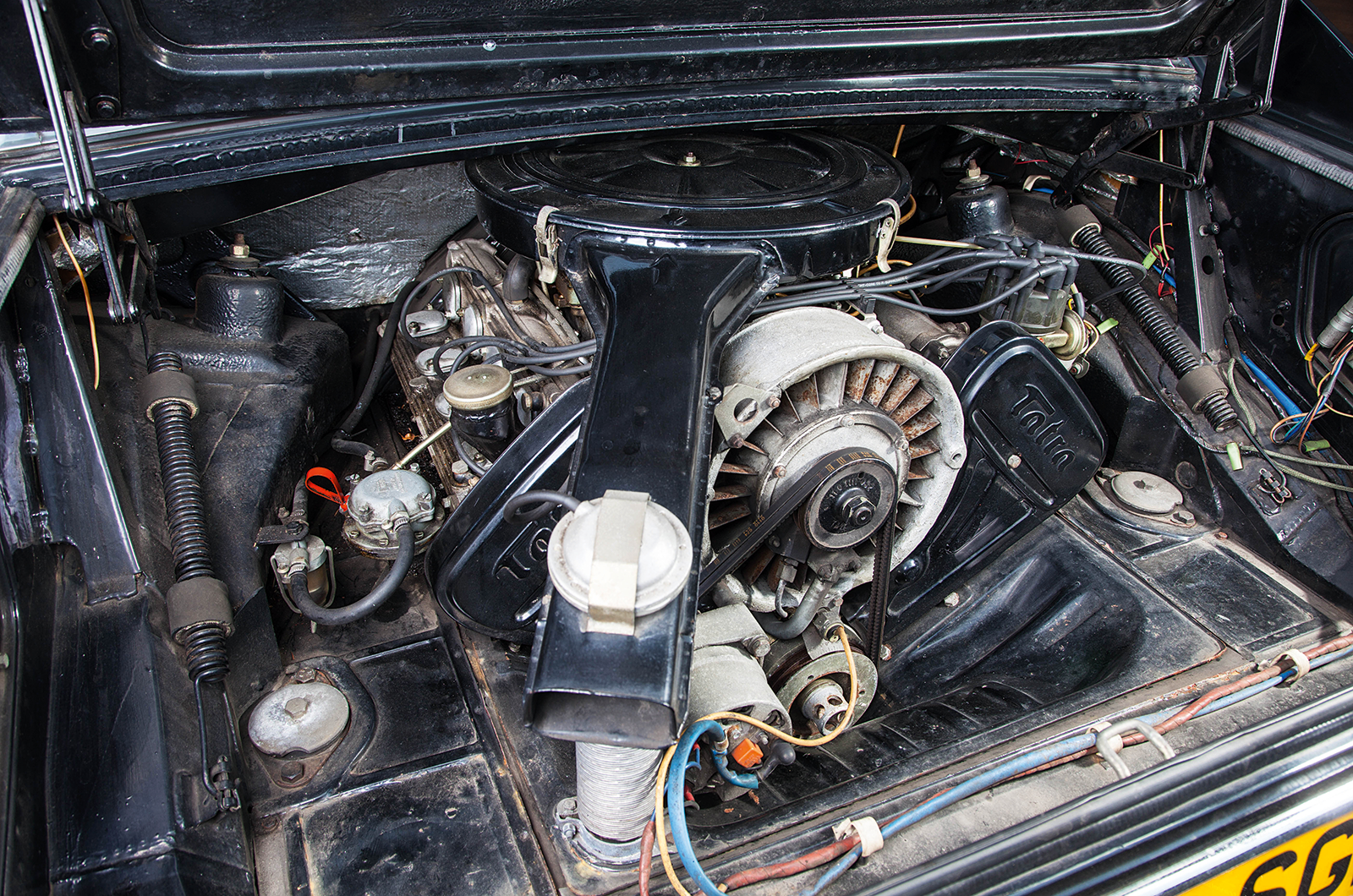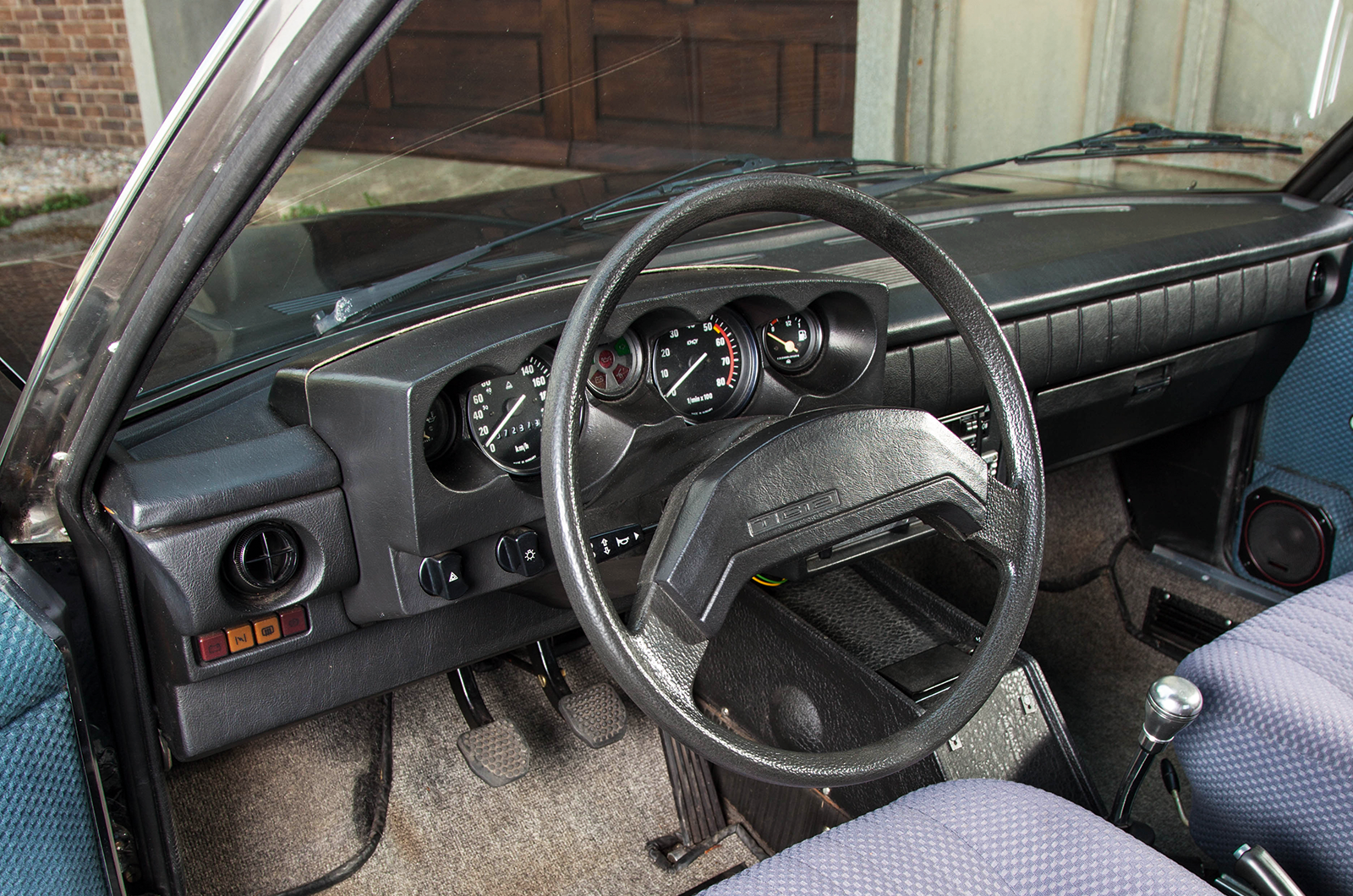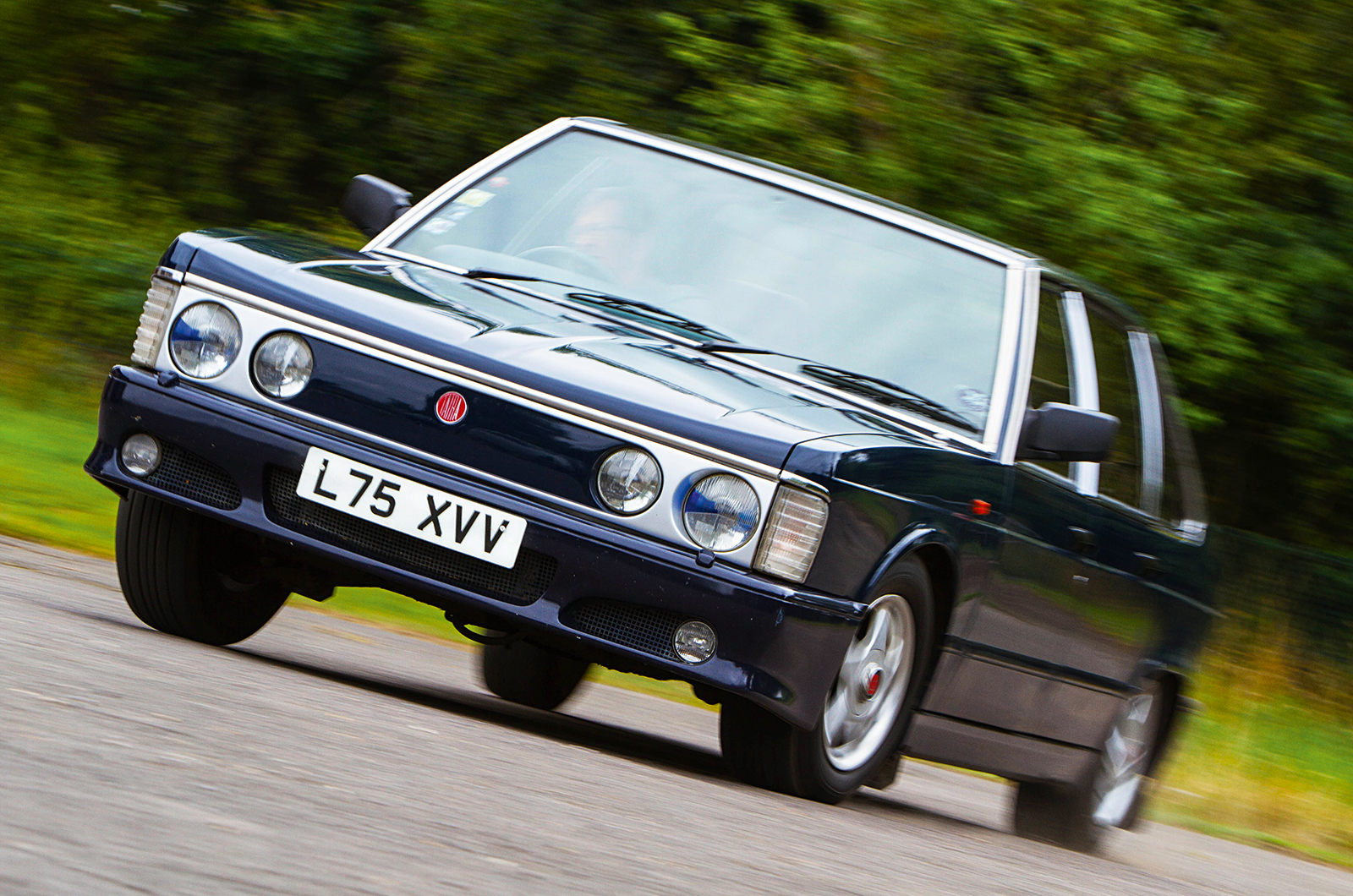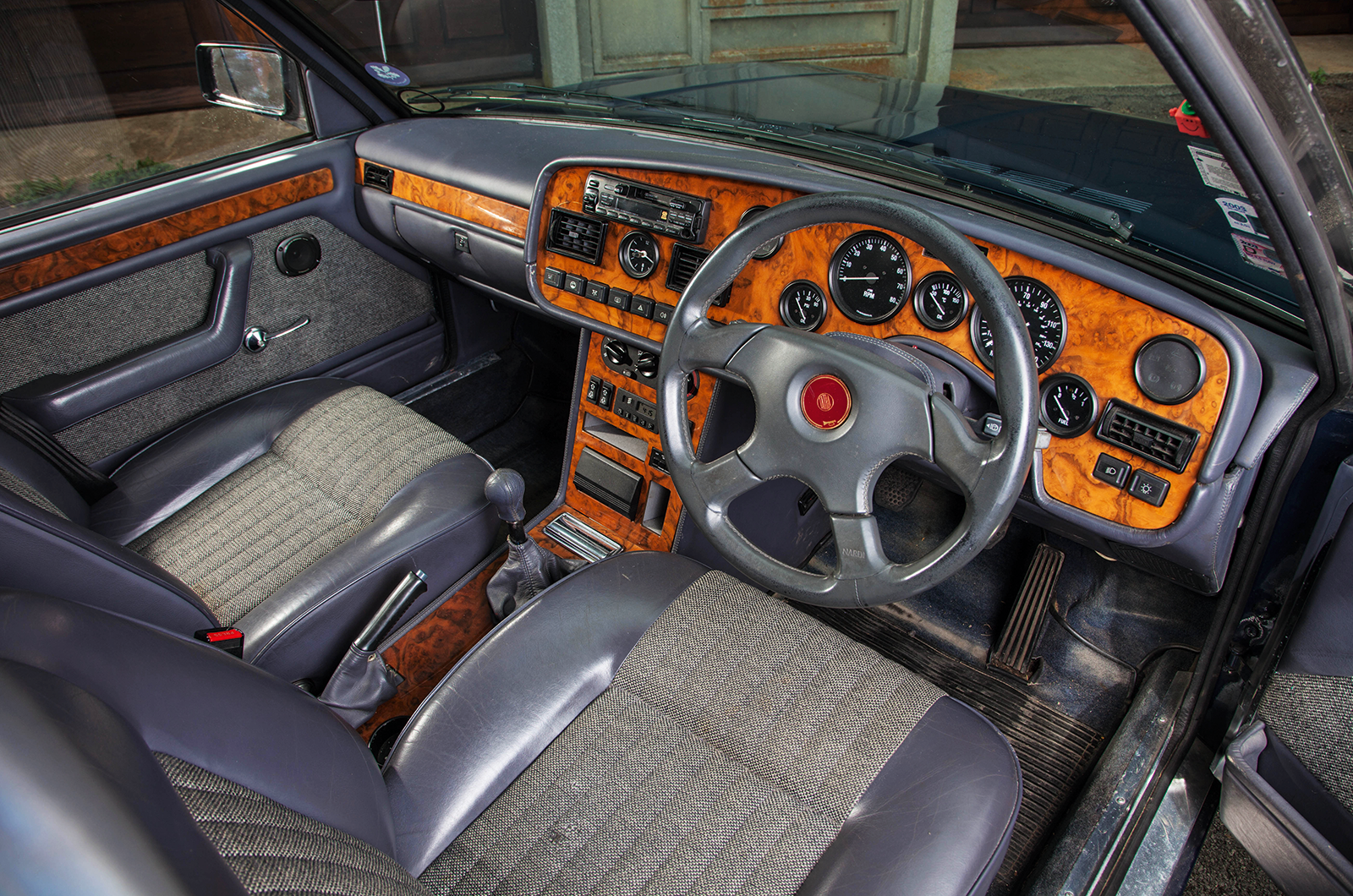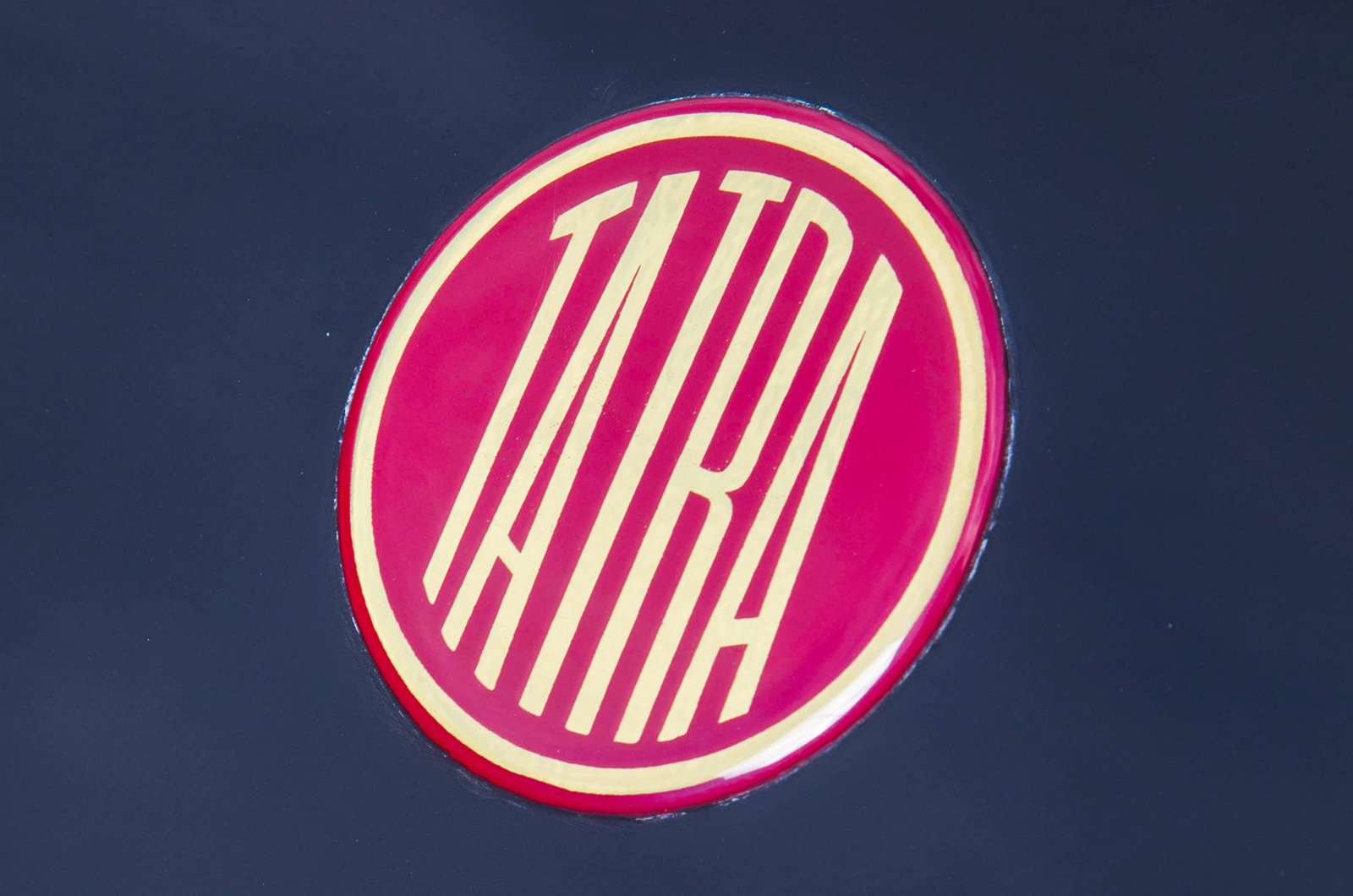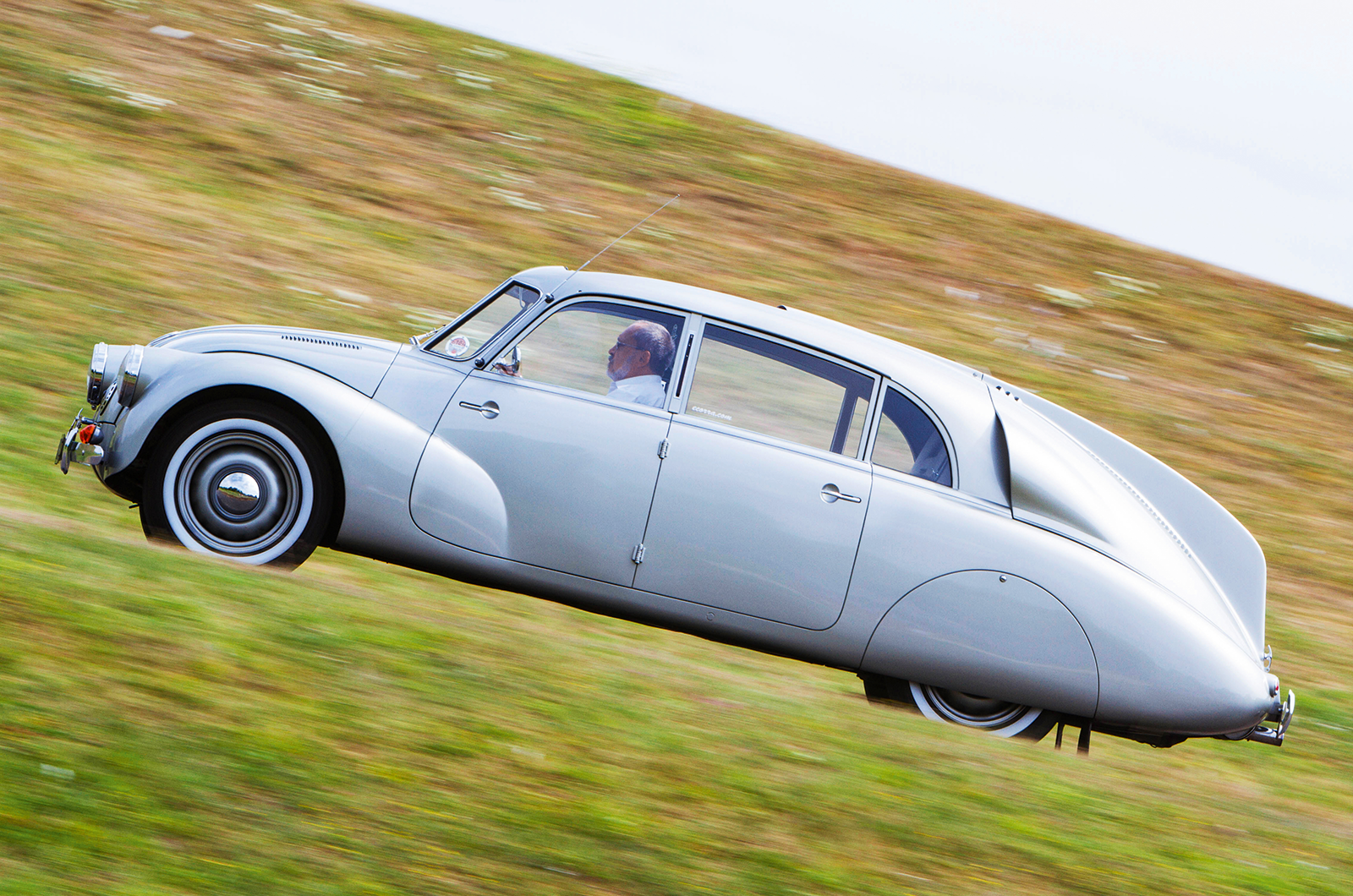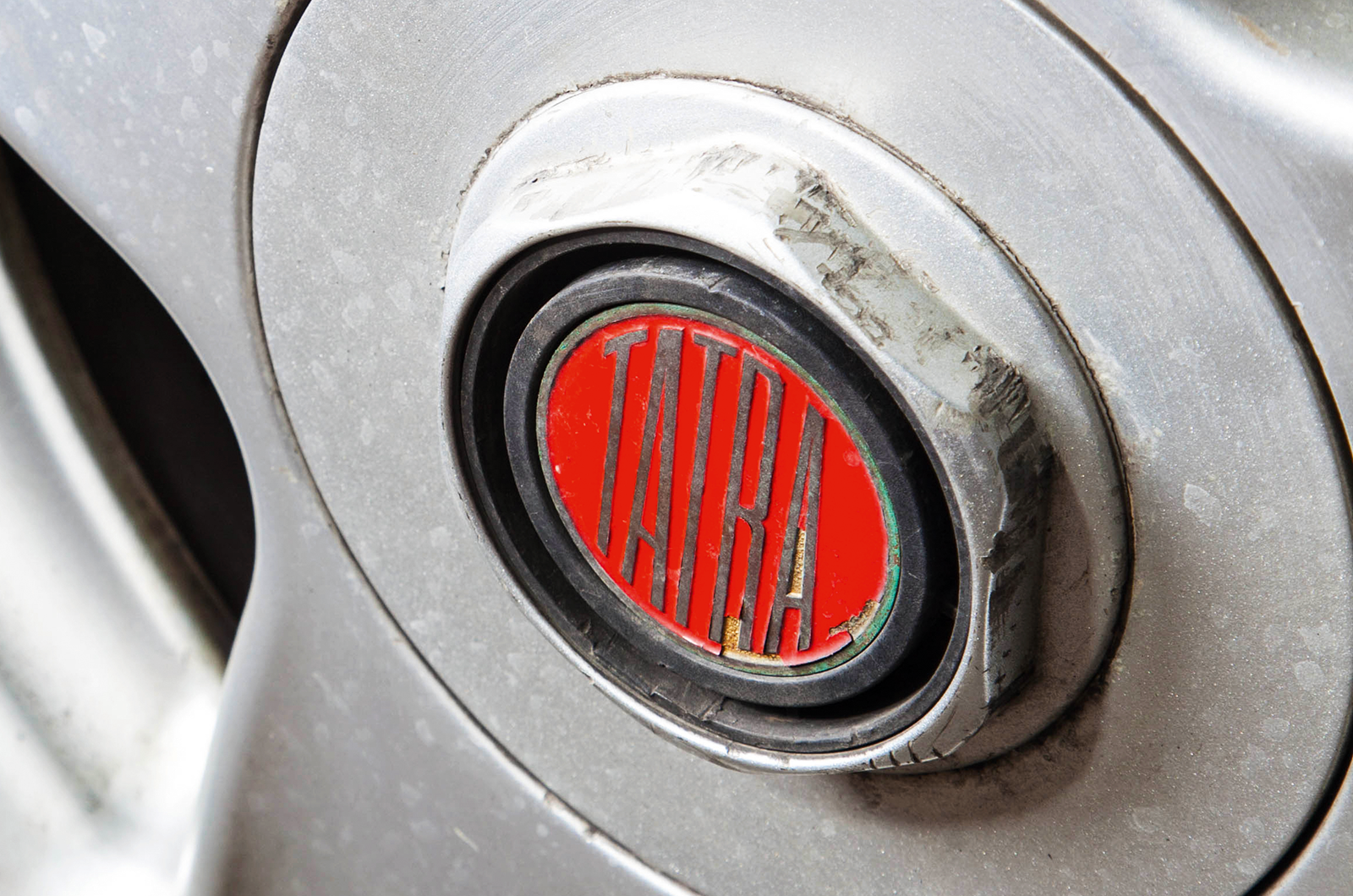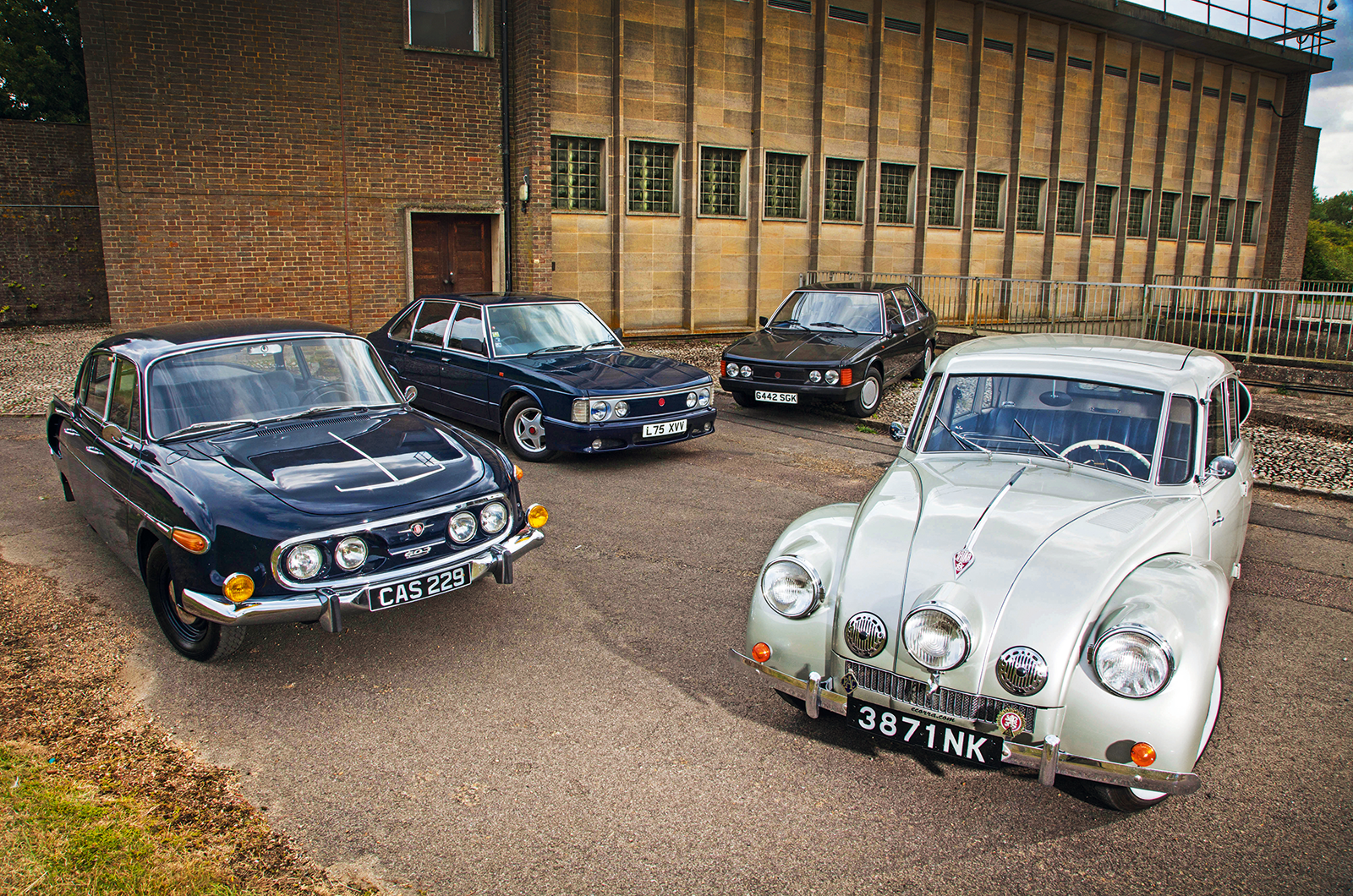The T87 was launched at a time of cars with then-fashionable ‘aero’ styling but, as with the T603, its coachwork had been scientifically formulated.
Both models created their own ethos, with their styling being a mere function of their engineering.
In short, they looked like themselves and no other car.
In contrast, the cuboid lines of the T613 belong emphatically to the late 1960s – Tatra meets Fiat 130.
Mercedes-like tail-lights on the Tatra T613-3
In 1985, the third-generation T613-3 lost its chrome fittings and production continued until 1996, with our two featured examples being aimed at very different markets.
The black car was originally one of 500 T613-3s that were built for North Korea before the order was cancelled; its owner Peter Frost believes that it was originally destined for police work.
Compared with the standard model, there is a high-compression engine, a lack of electric assistance for the windows and door locks, plus higher front seats.
This Tatra T613-3 was supplied with a high-compression V8 engine
The overriding impression of this T613-3, however, is lent by its original intended customer.
The T603 was already associated with the much-loathed Czech secret police, but in North Korea the sight of a black 613 owned by the Ministry of People’s Security would have been akin to seeing an unmarked Ford Falcon in Argentina during the 1970s.
Our final car is the T613-5, a model launched at the 1993 Frankfurt Motor Show and aimed at Western markets.
The Tatra T613-3 has an austere interior with a simple plastic dashboard
By then, the fall of the Iron Curtain had meant the collapse of many of the firm’s traditional export territories – within three years, sales to the former Soviet Union had been reduced by nearly 90%.
Western sales, which had previously been of marginal concern to Tatra, were one option, but its cars had never been created with such markets in mind.
Enter the British engineer and visionary Tim Bishop, who saw in the T613 the potential for a ‘five-seater Porsche 911’, but the challenges of selling the car in the UK remained formidable.
The final incarnation of the Tatra T613 featured a lower ride height and wider track
The Tatra name meant little to your average Jaguar XJ owner, and large rear-engined saloons had last been seen way back in 1974 in the somewhat smaller form of the VW 411.
So, Tatra GB offered a T613-5 that would be handbuilt to the owner’s specification for a price in the region of £30,000.
Bishop and his team had the suspension lowered in order to enhance the handling and update the car’s appearance, in addition to replacing the carburettor with electronically controlled multi-port fuel injection and fitting emission-control devices plus a five-speed transmission.
There were also alloy wheels that are typical of the early 1990s plus a bodykit to enhance the T613-5’s appearance.
Inside, the Tatra T613-5 has an extensively reworked cabin and boasts more equipment
Four right-hand-drive prototypes were made and our featured car received a great deal of publicity, even appearing on Top Gear, but the British executive buyer was just not ready for a four-door rear-engined luxobarge, even if it did have a walnut-veneer dashboard.
The T613-5 represents a fascinating reminder of both the conservatism of so much of that market sector and the awe-inspiring potential for individuality.
With its unorthodox layout and uncompromisingly angular body, it deserves complete respect in an increasingly conformist world.
The Tatra T613-5 was kitted out with fuel injection for the quad-cam powerplant
After the demise of the T613, Tatra car production continued with the facelifted T700 until 1998, 31 years after the death of Hans Ledwinka.
Our spectacular quartet forms a fitting testament to his legacy.
Some cars belong to a particular era and a few define one, but only a machine such as a T87 can transcend the years.
My abiding memory of the day, however, is of our T603 surrounded by various seabirds against a background of sinister clouds reflected on the waters of the reservoir – an almost cinematic Cold War scenario, and truly fitting to the enigma that is a Tatra.
Images: Eric Richardson
Thanks to: Dr Jiri Pechan; Ian Tisdale; Peter Frost; Patrick Donlan; The Tatra Register UK; William Barnard and everyone at Farmoor Reservoir
This was first in our February 2015 magazine; all information was correct at the date of original publication
Tatra T87, T603 and T613: behind the wheel
Each generation of Tatra has its own distinct driving characteristics
Tatras are naughty cars.
They’ll beguile you with their styling, their other-worldly engineering and the firm’s underdog status in the face of political dogma.
Back yourself into a T87 to settle in the driver’s seat, and you’re faced with a bay-windowed vista.
From cold, Tatra engines will instantly burst into life, but when warm there’s a deal of cranking necessary – a feature of the marque.
At idle, there’s a cammy mechanical insistence.
You need to get some revs on to pull away – there’s an increasing liveliness the higher up the rev band you push.
Tatra is best known for its futuristic streamliners
Its thrum is intoxicating and encourages you to drive a T87 hard, just as intended back in the 1930s.
Handling? There are few cars with such a killer reputation.
But get all your braking done in a straight line, don’t lift off in corners, and the benign body-roll combines with subtle feedback through the sprung wheel.
A T603 has more power. Instead of individual chairs you’re perched on a vast horsehair bench.
The four-on-the-column wand, directing gears almost three metres behind you, is not precise.
Also, each T603 seems to require different inputs of push, pull and wiggle to engage ratios.
The rear-mounted engine and swing-axle suspension gave early Tatras a reputation for wayward handling
The swing-axle suspension feels supple on coil springs instead of a T87’s leaves.
Driven fast, a 603 is more difficult to upset – and on radial tyres you’ll hear an audible protest prior to any rear-end breakaway. But break away it will.
A 613-3 feels like a quantum leap. Fully articulated suspension suppresses the road surface.
Quadruple overhead camshafts in the 3495cc motor give adequate power, and hustling a 613 is fun.
The Tatra badge has changed little over the years
Until, that is, the long-travel bump and rebound coupled with tall 80-profile tyres fool you into a tank-slapper.
The final 613-5 is almost a regressive step: it feels more homemade and a development too far.
Yes, the handling is better – the lower ride height and wider track see to that – but the fuel-injected engine’s ‘driver learning’ mode can be easily upset – giving gaps in the power-band – and reliability suffers.
Everyone should drive a Tatra, though.
They’re flawed dynamically, and all the more enticing because of that.
Words: Dave Richards
Factfiles
Tatra T87
- Sold/number built 1936-’50/3023
- Construction steel monocoque
- Engine alloy block and heads, iron barrels, air-cooled, sohc-per-bank 2969cc V8
- Max power 74bhp @ 3500rpm
- Max torque n/a
- Transmission four-speed manual, RWD
- Suspension independent, at front by torsion lever and double wishbones rear coil springs, swing axles, hydraulic dampers
- Steering rack and pinion
- Brakes drums all round
- Length 15ft 8½in (4470mm)
- Width 5ft 5½in (1676mm)
- Height 4ft 11in (1498mm)
- Wheelbase 9ft 4in (2844mm)
- Weight 3020lb (1370kg)
- 0-60mph 18 secs
- Top speed 103mph
- Price new 25,000 SFr
Tatra T3-603
(where different)
- Sold/number built 1956-’75/20,422 (all)
- Engine 2545cc V8
- Max power 100bhp @ 4800rpm
- Max torque 125lb ft @ 3500rpm
- Suspension independent, at front by MacPherson struts rear swing axles, coil springs
- Brakes discs all round, with servo
- Length 16ft 7in (5065mm)
- Width 6ft 3in (1910mm)
- Height 5ft 1in (1530mm)
- Wheelbase 9ft 1in (2750mm)
- Weight 3329lb (1510kg)
- 0-60mph 16 secs
- Top speed 101mph
- Price new 98,000 CSK
Tatra T613-3
(where different)
- Sold/number built 1975-’96/c11,000 (all)
- Engine dohc-per-bank 3495cc V8
- Max power 165bhp @ 5200rpm
- Max torque 195lb ft @ 2500rpm
- Suspension independent, at front by MacPherson struts rear semi-trailing arms, coil springs
- Steering rack and pinion
- Length 16ft 5in (5000mm)
- Width 5ft 11in (1800mm)
- Height 4ft 9in (1440mm)
- Wheelbase 9ft 10in (2990mm)
- Weight 3527lb (1600kg)
- 0-60mph 11 secs
- Top speed 116mph
- Price new n/a
Tatra T613-5
(where different)
- Sold/number built 1993-’94/5
- Engine fuel injection
- Max power 200bhp @ 5750rpm
- Max torque 300lb ft @ 4000rpm
- Transmission five-speed manual
- Steering power-assisted rack and pinion
- Length 16ft 9in (5130mm)
- Height 4ft 11in (1505mm)
- Weight 3990lb (1810kg)
- 0-60mph 7.5 secs
- Top speed 134mph
- Price new £30,000
Enjoy more of the world’s best classic car content every month when you subscribe to C&SC – get our latest deals here
READ MORE
Citroën DS19: the green goddess
34 aerodynamic classic cars
Is the NSU Ro80 the greatest saloon ever made?
Andrew Roberts
Andrew is a long-time contributor to Classic & Sports Car
